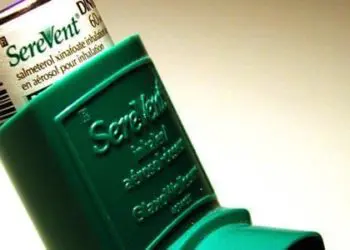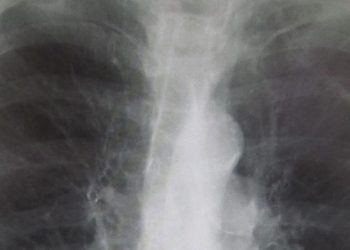Decreased air pollution associated with fewer episodes of childhood bronchitis
1. A falling prevalence of bronchitic symptoms in children with and without asthma was associated with decreased levels of several airborne pollutants.
2. There was a strong temporal relationship between the reduction in air pollution and the falling prevalence of bronchitic symptoms.
Evidence Rating Level: 2 (Good)
Study Rundown: Air pollution has been rigorously linked to the increasing prevalence of bronchitic symptoms in children across the country. However, no studies have yet been able to conclude that air pollution directly causes these respiratory issues. This prospective cohort study sought to satisfy one of the tenets of causality by establishing the temporal relationship between levels of several air pollutants and the rates of bronchitic symptoms in children. There is perhaps no city better in the US to study the effects of air pollution than Los Angeles. Long infamous for its “smog crises” and heavy burden of air pollution in the 1980s, the city has been able to achieve remarkable improvements in its air quality over the past 25 years. Thus, this study tracked bronchitic symptoms among several large cohorts of school-aged children in southern California between 1994 and 2011 and compared these rates to the environmental levels of several air pollutants. The results showed that after years in which specific air pollutants—including nitrogen dioxide, ozone, and airborne particulate—were reduced, the rates of bronchitic symptoms were likewise deceased.
This study concluded that decreasing levels of specific air pollutants had a measurable and significant association with reduced rates of bronchitic symptoms, and that this effect had a firm temporal relationship. It utilized a large and ethnically diverse prospective cohort of children and followed them for a long duration, improving the reliability of the finding. The study was not designed specifically to test causality though, and is limited by possible biases and an imprecise marker of disease. Overall, this data adds credence to the notion that air pollution may be causal for respiratory disease in children.
Click to read the study in JAMA
Relevant Reading: Decline of ambient air pollution and respiratory symptoms in children
In-Depth [prospective cohort]: This prospective cohort study aimed to assess the connection between changing levels of air pollution and bronchitic symptoms in children. The study enrolled a total of 4602 children from 8 communities in southern California across 3 distinct cohorts. In 1993 and 1995, 4th graders between 9 and 10 years of age were enrolled and followed for 9 years. In 2003 another cohort of children between 5 and 7 years of age was enrolled and followed for a total 10 years. The primary outcome in the study was the rate of bronchitic symptoms in these children in a given year, defined as 3 months of daily cough, congestion, or phlegm not in the setting of cold, and bronchitis. The main exposures tested in this study were the local annual average levels of air pollutants including nitrogen dioxide, ozone, and particulate matter with a diameter of smaller than 10 or 2.5 microns.
Levels of all pollutants were found to decrease during the follow-up of each cohort, which resulted in lower rates of bronchitic symptoms. With a median reduction of nitrogen dioxide of 4.9 ppb, there was an associated odds ratio (OR) of 0.79 for bronchitic symptoms in children with asthma (95%CI 0.67-0.94). A 3.6 ppb reduction in ozone was associated with an OR of 0.66 (95%CI 0.50-0.86). A reduction of 5.8 and 6.8 micrograms per cubic meter of particulate smaller than 10 and 2.5 microns respectively had an OR of 0.61 (95%CI 0.48-0.78) and 0.68 (95%CI 0.53-0.86), respectively. The ORs for each pollutant among children without asthma were smaller but still significant.
Image: PD
©2016 2 Minute Medicine, Inc. All rights reserved. No works may be reproduced without expressed written consent from 2 Minute Medicine, Inc. Inquire about licensing here. No article should be construed as medical advice and is not intended as such by the authors or by 2 Minute Medicine, Inc.






